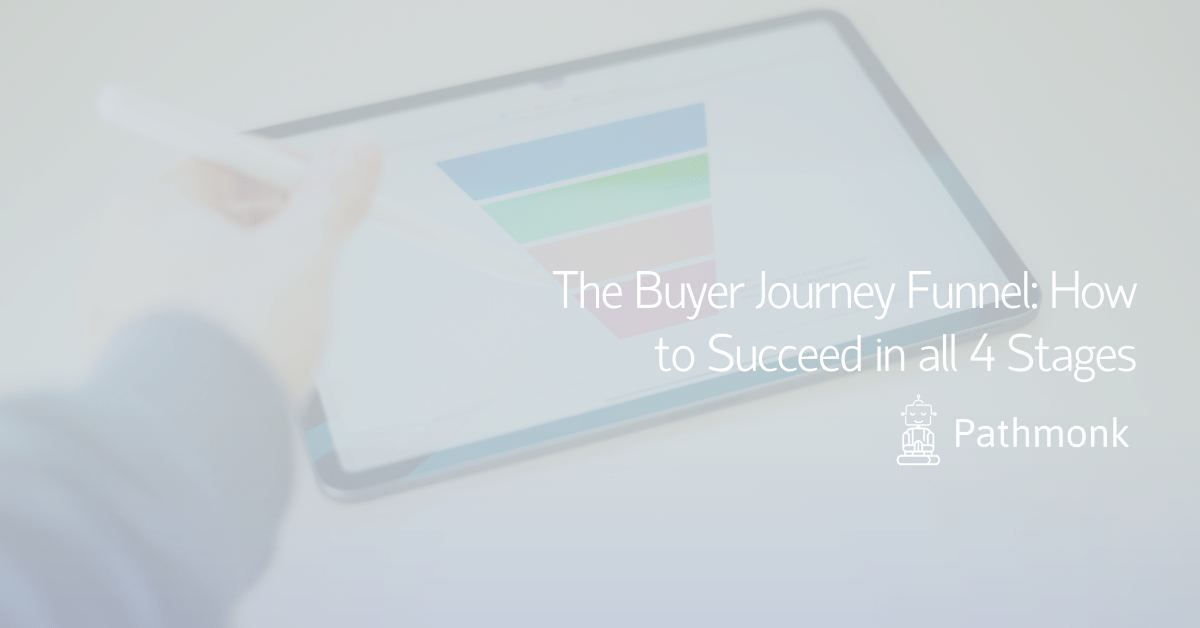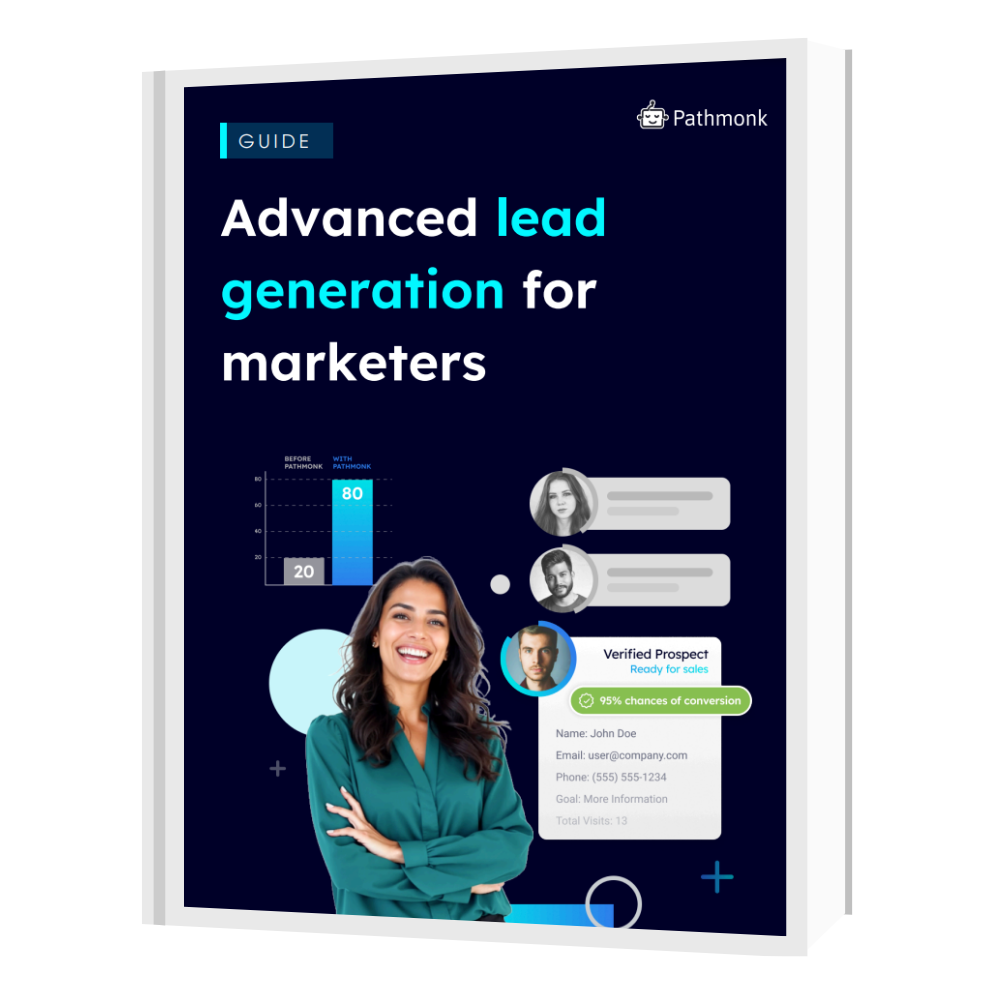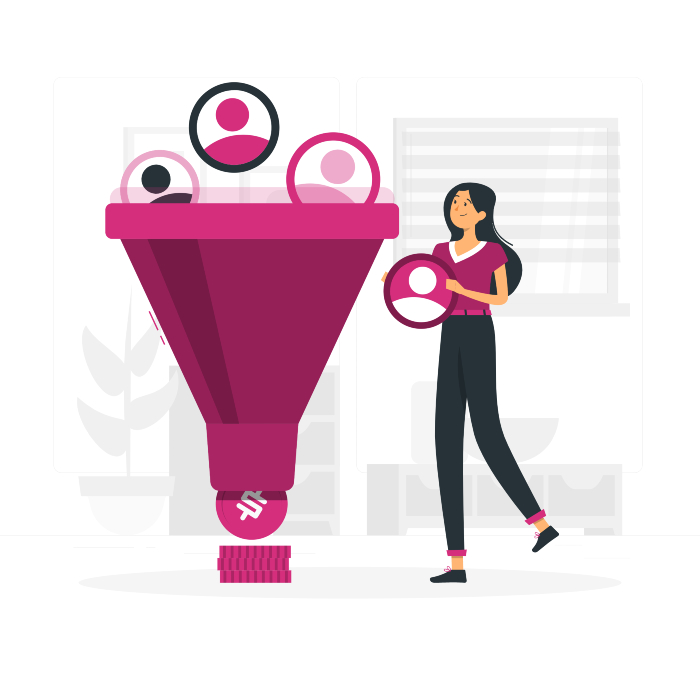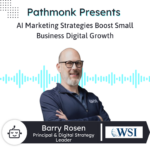
Getting an individual to become a customer after being a lead can sometimes be quite complex. In order for this to occur, a business needs to have a clear and detailed understanding of its target audience.
In having this, the business can create content that’s tailored to the needs of this audience throughout the different stages of the buyer journey funnel. The entire process of the buyer’s journey funnel in itself is incredibly complex, which is why we have broken it down.
What is the Buyer Journey Funnel?
The buyer journey funnel is classified as the procedure that buyers go through in order to gain awareness of, as well as consider, evaluate, and decide to buy a specific product or service that was once unknown to them.
When looking further into this definition, the buyer’s journey funnel is essentially everything that a potential customer is going to go through before they decide whether or not they want to buy the product or service.
A statistic related to this buyer’s journey is that 67 percent of buyer’s decisions are ultimately made before a buyer even gets to sales. With this powerful information, it can easily be seen how important this buyer’s journey is.
Generate better leads to grow your sales
Discover new strategies to unlocking a flood of high-quality leads from your website.

Why is the Buyer Journey Funnel Relevant?
The data pertaining to the buyer journey funnel highlights that the majority of customers are conducting research and finding the respective information needed to make their decision. Thus, they’re making this decision on their own, without any influence from the business itself. In essence, most potential customers are going to make up their minds way before they ever reach out to your business.
This is obviously not a position any business wants to be in because its marketing is essentially being taken out of the business’s hands. Thus, what can businesses do to combat this? Well, the purpose of the buyer’s journey funnel is to help a business identify and highlight the buyer’s journey of the company’s potential customers.
In doing this, a business is empowered to meet these potential customers at the source of where they are receiving such information that’s influencing their decision-making. With this information, a company can be the one providing them with all the information they need to decide to purchase these specific products or services.
Why is the Buyer Journey Funnel Important?
As previously mentioned, customers make their decision before even being put in direct contact with the business. Therefore, identifying the channels where these potential customers are receiving this information provides these businesses with the ability to influence this content and gently nudge the potential customer to make a decision that positively impacts the business’s customer base and sales.
A business can nurture potential customers towards making a decision that positively impacts the company by effectively providing answers and value at each stage of the buyer’s journey.
When using the buyer journey funnel as a basis of decision-making on matters involving marketing and advertising, you’re able to avoid the common mistakes created from taking more conventional approaches. These traditional strategies include delivering a hard sales pitch.
One of the benefits of using the buyer journey funnel is that you’re able to offer these potential clients exactly what they need regarding a particular stage of the buyer journey funnel these leads are present in. Doing this helps them move in the direction that supports your business.
Additionally, supplying a lead with expert guidance is going to help build trust with the potential customer. This makes it more likely that this lead is going to decide to support your business than if you were to attempt to force their hand in purchasing your product or service.
Everyone in the business world knows that trust plays a significant role in influencing today’s potential clients. Thus, providing support to a lead in accordance with the stage of the buyer journey funnel that they are present in provides you with the highest likelihood of converting them to buyers.

The Different Stages of the Buyer Journey Funnel
There are four different stages making up the buyer journey funnel. These are:
Awareness
The first step of the buyer journey funnel is to attract these potential customers to your business. This can also be classified as building brand awareness and is used to ‘introduce’ the potential client to your business. This awareness step’s importance is that you’re providing information on your business that introduces these leads to your business, your service or product, and what your company is all about.
By offering relevant information through blog content and additional pages that can be found through the use of search engines, a business can turn strangers into visitors. The content offered in this awareness stage is often educational in nature and is rarely anything promotional.
The objective of this awareness stage in the buyer journey funnel is to:
- Optimizing your business’s brand awareness.
- Troubleshooting any confusion your leads may have.
- Answering questions.
Consideration
After the consideration process, the stranger is now familiar with your business and what you’re offering. In some cases, you might not mention the products or services provided. Meaning, the consideration stage would be a good time to make this product or service introduction.
The importance of this step helps convince these leads to go with you and convert into a customer. This stage of the buyer’s journey involves the potential customer comparing their choices.
Thus, it’s imperative that you provide these potential clients with information about why your product or service can best serve their needs, as well as why it’s the highest-quality and why they should ultimately purchase your product or service. This stage is built on the considerations that these potential clients are going to have. As a result, this is arguably the most important step in the buyer’s journey as this information is going to help the potential client make the decision.
The objective of this consideration stage in the buyer journey funnel is to:
- Build the social media channels of the business as a method of nurturing potential buyers.
- Capture emails that convert potential customers into leads.
- Build a relationship that has the ability to drive visitors back to your business’s site.
Decision
The decision step in the buyer journey funnel is the one where you see the results from the previous two stages. This is where the lead is either going to be converted into a customer or go along a different path. Now, the information provided in the previous step, consideration, is ultimately going to help these leads consider whether they want to make a purchase or not.
In this stage, the lead is ready to purchase a product or service, but not necessarily from your business. Thus, the goal is to convert this lead into a customer. The content provided in this step should help your leads decide between supporting your company or its competitors.
During this stage, you’re going to want to convince these leads why you’re the right choice as opposed to others offering similar products or services. Examples of content that can be used to help ‘seal the deal’ would be webinars, coupons, free trials, and more.
The objective of this decision stage in the buyer’s journey is to:
- Maximize your business’s funnel conversions.
- Convert leads into loyal customers.
- Maximize your business’s initial conversion value.
Closing
Therefore, your lead has now been successfully converted into a customer. However, there isn’t any time for celebrating just yet because making a sale should never be the last transaction you, as the business, have with the customer. You can use various methods to reach out and make sure these clients are getting the most out of your product or service.
Ensuring that these customers are getting the most out of these products or services helps promote their satisfaction with the product or service. Meaning they are likely to recommend your business to others and become a repeat customer. Examples of content for this stage could include tutorials, email newsletters (that occasionally have coupons), as well as apps that have been specially designed.
The objective of this closing stage in the buyer’s journey is to:
- Maximize your business’s customer value.
- Convert your business’s customers into loyal clients.
- Reduce your customer churn.
- Offer company branding initiatives.
The Bottom Line
With the developments of technology, information has become increasingly easily accessible. This has ultimately taken the marketing power out of businesses’ hands. This is because the lead is provided with all that they need to make a decision on whether or not to support the business without even reaching a direct interaction with the company itself.
However, the buyer’s journey provides the business with a structure that can be used to gain this marketing power back. Gone are the days of intense sales pitches and other traditional sales approaches. This buyer’s journey allows the business to know the channels that they can use to offer content that holds the potential to convert these leads.
For these reasons, the buyer’s journey is a crucial part of any business’s marketing strategy and advertising campaign. When successfully implemented, methods developed from using this buyer’s journey can increase the number of lead conversions a company receives. Thus, increasing market share and revenue.
Understand your customer journey analytics
See how your users behave, find drop-offs, and receive actionable insights with AI.








